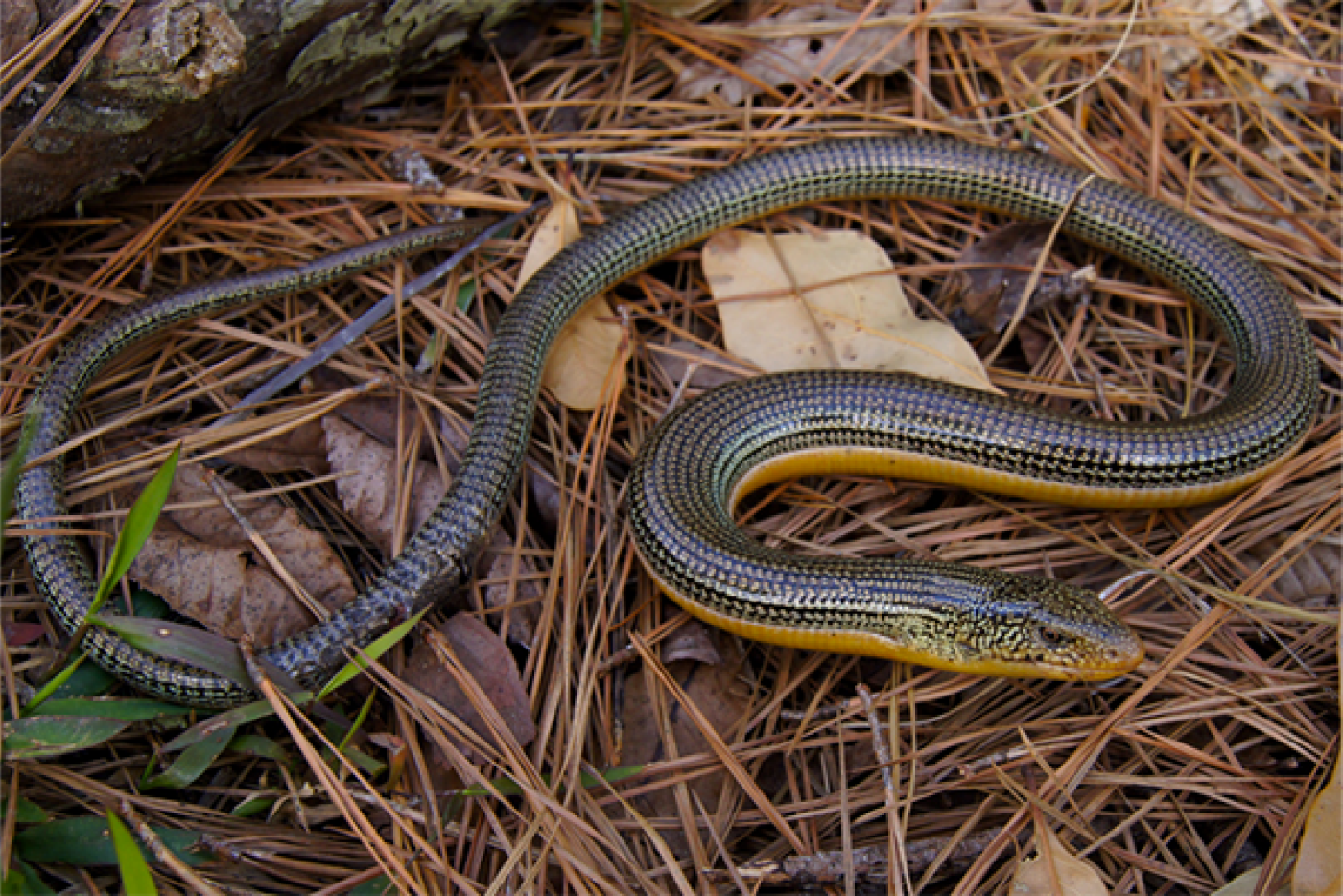Eastern Glass Lizard

Scietific Name: Ophisaurus ventralis
Photo Credit: Ian Deery
Eastern glass lizards (Ophisaurus ventralis) rank among North America’s longest lizards, measuring between 18 and 43 inches (45.7–108.3 cm). They lack the dark lengthwise stripes found under the side groove and beneath the tail, and they do not exhibit a clear mid-dorsal stripe. Their coloration may include greenish upper bodies with yellowish undersides and irregular white or pale blotches on the neck. Younger individuals appear khaki with bold dark lines down their sides, while adults often take on a more speckled, green-toned look
These lizards are daytime hunters with a varied diet that includes insects such as grasshoppers and beetles spiders, snails, earthworms, small mammals, reptiles, and bird eggs. Their jaw structure, unlike that of snakes, limits them to prey no wider than their head.
Eastern glass lizards are most frequently found in sandy habitats of the Coastal Plain and Piedmont, including pine flatwoods, dunes, wet meadows, and marsh edges. They are terrestrial burrowers that spend much of their time under logs, leaf litter, or other debris.
These lizards breed in spring, laying eggs during June and July in shallow nests under logs or debris. Clutch sizes typically range from 5 to 17 eggs, which incubate for about 50–65 days. Females usually stay close to the nest, helping to reassemble disturbed eggs, until hatching occurs in late summer
Although they resemble snakes, eastern glass lizards possess movable eyelids, visible ear openings, and firm jaws. They are diurnal and often dig or burrow in loose, sandy soils. A key defense is tail autotomy: when threatened or captured, they may break off part of their tail, which continues to wriggle—earning them the nickname “glass” lizard. Regrowth follows, but the new tail is usually shorter and differently colored
Notable features include eyelids, ear openings, a smooth legless body with lateral grooves, and the absence of under-tail striping
Explore the full species profile, including their habitat, diet, and behavior on Herps of NC.
